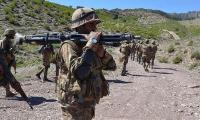Against the backdrop of Mullah Akhtar Mansour’s killing, what is particularly puzzling policymakers and veteran experts of the Afghan conflict is Mansour’s frequent trips to Iran. At the time of his assassination, Mansour had entered Pakistani territory from the Iranian border crossing at Taftan. The passport found in his possession – miraculously intact – shows entry and exit stamps of his travels to Iran from Pakistan. Some media reports have even claimed that before carrying out the drone strike in Balochistan, the US was tracking his movement from Iran.
Historically, the relationship between Iran and the Taliban has remained hostile and adversarial. Iran is a Shia majority state while the Taliban are an orthodox Sunni-Deobandi group. In 1998, the two came close to a war over the killing of eight Iranian diplomats in the Afghan city of Mazar-e-Sharif. Iran deployed more than 70,000 troops along its border with Afghanistan and threatened to invade the country. During its regime in Kabul, the Taliban provided shelter to anti-Iranian militant groups like Jandullah and Lashkar-e-Jhangvi. Tehran, on the other hand, has supported the anti-Taliban Northern Alliance group; the Northern Alliance is also supported by Russia and India.
Additionally, Tehran tacitly supported the US intervention in Afghanistan which resulted in the Taliban’s downfall. Iran also shared intelligence with the US on the whereabouts of Taliban leaders. In the 2001 Bonn Conference, Tehran played a pivotal role in the formulation of the post-Taliban government of Hamid Karzai.
In light of the above, the current reports of cooperation between Iran and the Taliban defy historical, geopolitical and geo-sectarian trends.
Media reports are rife with speculations about Mansour’s trips to Iran. Some indicate that he travelled for medical treatment. Others maintain that he went there to visit his family. Still others point out that he was in Iran to hold meetings with Taliban officials who run two Taliban offices known as the ‘Mashad Shura’ established in 2012 in the city of Zahedan.
The nature and magnitude of cooperation between Iran and the Taliban warrant deeper examination. If it is true that the Iranian intelligence provided information of Mansour’s movement to the US – a charge that Tehran vehemently denies – then is it right to assume that the relationship between Iran and the Taliban is changing for the worse?
Moreover, has the signing of the Chahbahar Port agreement between India, Iran and Afghanistan brought Tehran closer to Kabul, and distanced it from the Taliban? If that is the case, then what will be the future of political and security dynamics in Afghanistan? It is important to probe these questions dispassionately in the context of revisiting Pakistan’s Afghan policy.
Iran covertly cultivated ties with the Taliban after the US slapped sanctions on the country over its secret nuclear programme. Iran’s outreach to the Taliban was grounded in fears of encirclement by American troops from Afghanistan and the Middle East. To fend off American forces stationed in Afghanistan, Iran provided weapons, financial assistance and shelter to the Taliban. By doing so, the country wanted to create a buffer between the 921 kilometre Iranian border with Afghanistan and the US military bases in the country.
Notwithstanding the US-Iran nuclear deal, relations between the two countries are less than ideal. Policies and interests of the two diverge widely over the Syrian conflict as well. Iran, along with Russia and China, supports the Assad regime in Syria, which the US-led Western block opposes, alongside Turkey and the Sunni sheikhdoms of the Middle East.
Iran’s cooperation with the Taliban is also part of its hedging strategy to keep multiple options open in case of another civil war in Afghanistan. Considering the political challenges confronting the embattled Afghan Unity government and the emboldened Taliban insurgency, Iran deems it essential to keep a window of cooperation open with Taliban, arguably Afghanistan’s most powerful political and militant group.
Taliban’s willingness to cooperate with Iran, its old political foe, is rooted in plans to diversify its options rather than solely depending on Pakistan. The decision has also been prompted by the Taliban leadership’s desire to keep their political and organisational freedom intact rather than following Pakistani dictates. Last July, when Pakistan exerted pressure on the Taliban to join the Afghan peace talks, the Taliban leadership at one point signalled leaving Pakistan rather than joining the peace talks.
Tensions have also exacerbated between the Taliban and Pakistan over the mysterious deaths of Taliban leaders Mullah Obaidullah Akhund and Ustad Yasir in the custody of Pakistani security agencies in 2010 and 2012. During this period, the Taliban were also concerned about the arrests of their leaders in Pakistan.
Another common factor that prompted Iran and the Taliban to cooperate was the emergence of IS-Khorasan – the local affiliate of the Islamic State in Afghanistan. Since its emergence, IS-Khorasan has grown in size and strength in eastern Afghanistan. This development not only undermines the Taliban’s unrivalled monopoly over Afghanistan’s jihadist landscape, but also poses a potential threat to Iran. Given Iran’s deep and active involvement against the IS in Iraq and Syria, the IS considers Tehran its bitter enemy and has vowed to “transform Iran into pools of blood.”
Given the recent developments, if Iran withdraws support from the Taliban and cooperates with Kabul and Washington, then Afghanistan could enter a new phase of armed conflict. In such a scenario, US drone strikes and military operations against the Taliban may increase. The growing US-Afghanistan-Iran cooperation and the US’s close alliance with India will push Pakistan further into regional isolation.
Pakistan, therefore, needs to revisit its Afghan policy and re-engage with all stakeholders to defuse further tensions. A new phase in the Afghanistan conflict will be detrimental to regional peace and stability. There are limitations to a militaristic approach towards bringing peace in Afghanistan; the country needs a fresh political and diplomatic strategy.
The writer is an associate research fellow at the S Rajaratnam School of International Studies, Singapore.
Email: isabasit@ntu.edu.sg
Economic nationalism remains potent political narrative, influencing both Republican and Democratic platforms
Yes, blockchain, decentralised and distributed ledger technology, is foundational backbone of cryptocurrencies
Blue carbon covers merely 2.0 per cent of ocean surface but absorbs 50 per cent of carbon dioxide
During WWII, Japan’s economy and national morale were plummeted by its doomed alliance with Germany
More than 40 persons, including women and children, were killed in Parachinar
After November 30, it will be impossible for ordinary internet users to access all banned websites, including X







